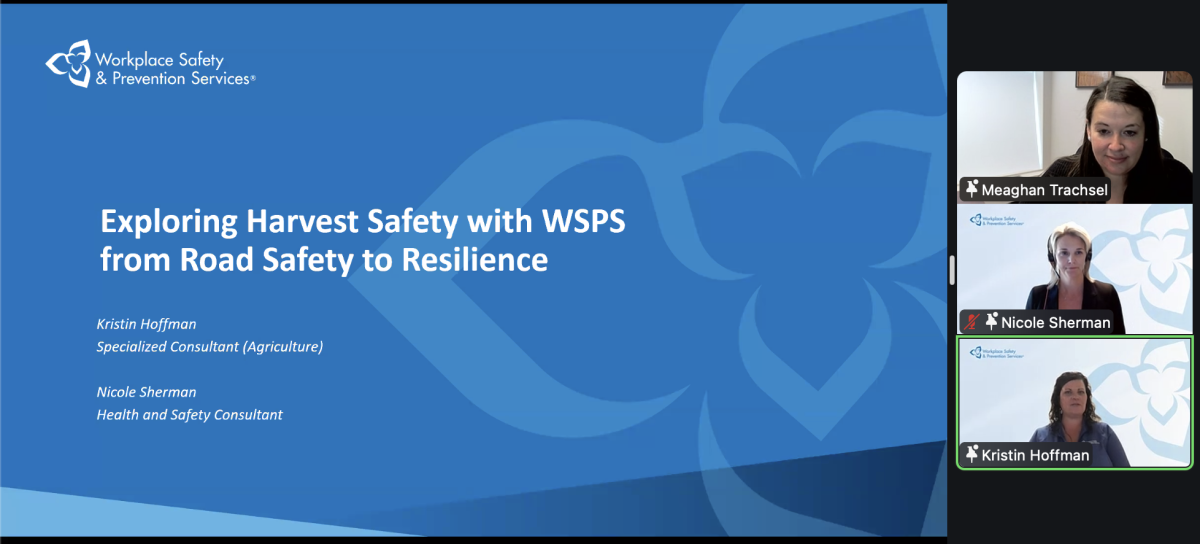Encouraging farmers to commit to an on-farm safety plan is the focus of this year’s Canadian Agricultural Safety Week, running until Saturday.
The co-ordinators behind Ag Safety Week, including the Canadian Federation of Agriculture (CFA), Canadian Agricultural Safety Association (CASA), Farm Credit Canada (FCC) and Agriculture and Agri-Food Canada, have developed a multi-year theme, Plan•Farm•Safety.
The “Plan” theme this year will promote safety walkabouts and planning for safety, the groups said in a release, while in the second year, the focus will be on “Farm” including implementation, documentation and training, followed by a “Safety” focus including assessment, improvement and further development of safety systems.
Read Also

Exploring Harvest Safety
Kristin Hoffman of WSPS explains measures for increased farm safety around harvest season
“Some producers feel that developing a farm safety program will create overwhelming paperwork — but that is not so,” CASA executive director Marcel Hacault said in a release.
“The idea behind the theme Plan•Farm•Safety is to offer a time period where farmers and ranchers can work with our campaign to go through the steps necessary to establish a practical farm safety program.”
“Fatigue, trying to save time and miscommunication between workers are among the leading human factors that contribute to farm-related injuries,” CFA president Laurent Pellerin said. “Having a farm safety plan and training workers accordingly gives the clear message: working on my farm means working safely.”
“A farm safety plan is an important part of a well-developed farm business plan,” FCC CEO Greg Stewart said. “Planning, protecting and investing in your health and safety and the safety of your employees is always a sound business decision.”
On average, 115 people are killed and at least 1,500 are hospitalized for farm-related incidents each year, according to the Canadian Agricultural Injury Reporting program (CAIR). In 2006, according to Statistics Canada data quoted by CASA, a total of 13,801 Canadian farms reported one or more medically treated or lost-time injuries.
CAIR data show the two leading causes of death on Canadian farms are machinery and livestock, specifically tractors and larger livestock such as bulls, horses and cows with calves.
Ag societies
Among specific safety initiatives launched this week, the Alberta government on Monday pledged $715,000 to Alberta’s agricultural societies to promote farm safety in the province.
All eligible agricultural societies will receive a payment of $2,500 to facilitate farm safety training in their community, the Alberta agriculture department said in a release.
Later this year, the Nova Scotia Federation of Agriculture plans to formally establish the Society of Farm Safety Nova Scotia, an organization to support improved awareness and education about farm safety.
The NSFA is currently developing a business model for the society, the province noted in a release Monday.
The Saskatchewan and New Brunswick governments on Friday issued proclamations declaring March 14-20 as Canadian Agricultural Safety Week in their respective provinces.
“The first step for producers to take in managing potential hazards on the farm is to plan,” the New Brunswick government said in its release. “With careful risk assessments and proper planning, producers will improve safety practices from the onset of operations.”
















